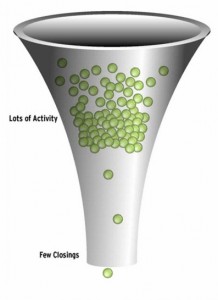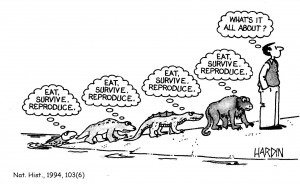Marketing Automation Improves Sales Pipeline Management
 For most small to mid-size B2B companies staying competitive with the “big boys” is a day-to-day challenge. Solution pricing, available resources, and operational costs must be constantly managed to remain viable. The most important business practice, sales, is often managed poorly so perfectly good sales leads slip through the cracks as a bare-bones staff tries to hit as many leads as possible to generate revenue and earn commissions. In fact, managing your sales pipeline efficiently may mean the difference between staying afloat and closing your doors.
For most small to mid-size B2B companies staying competitive with the “big boys” is a day-to-day challenge. Solution pricing, available resources, and operational costs must be constantly managed to remain viable. The most important business practice, sales, is often managed poorly so perfectly good sales leads slip through the cracks as a bare-bones staff tries to hit as many leads as possible to generate revenue and earn commissions. In fact, managing your sales pipeline efficiently may mean the difference between staying afloat and closing your doors.
The good news is: there is a sales pipeline management solution available which often makes financial sense to employ yet is overlooked as a cost-effective answer to lost leads. A marketing automation platform, such as our Lead Management Automation™ solution, can focus your sales agents and boost your close rate. However, putting a marketing automation system in place will only be effective if used properly. Here are five steps to improve your sales pipeline management practices by using an automated marketing program to boost sales effectiveness and enhance your lead management practices.
- Develop a lead profile based upon your existing customer base. Most salespeople are particular about the leads they will pursue. They want hot leads. The trouble is that most small to mid-size B2B enterprises are not set up to efficiently provide the most sales-ready leads to their sales agents. The first step is to define an optimal lead profile based on attributes and behaviors evident in your typical customer. This profile will represent the “low hanging fruit”. A marketing automation platform allows users to define the optimal sales prospect through lead scoring criteria; once a prospect (lead) achieves a specific score, any associated information can be easily shifted to a customer relationship management (CRM) program to be used when the sales department makes contact.
- Track the lead source once a prospect has entered the sales pipeline. Knowing how leads have come to your company is important in addressing their needs. Most B2B buyers spend time researching solutions prior to purchase. A lead management system that includes a marketing automation platform allows a sales agent to better connect with prospects by understanding what they are seeking and what marketing messages they have responded to.
- Distribute leads effectively (based upon lead scoring criteria) and quickly (based upon achieving a lead scoring threshold). Many times prospects are not ready to buy when B2B salespeople contact them. A marketing automation system provides a timing mechanism that, when used properly, will deliver the best leads at the appropriate time to the sales department.
- Nurture prospects when they are not ready to buy. As mentioned in #3, most leads aren’t ready to buy on first contact with your company. A marketing automation program will routinely deliver marketing messages and encourage prospect engagement to move leads through the sales pipeline until they are ready for a sales call. In this way, your sales agents are speaking with leads that have been introduced to your solutions, have been exposed to support materials (such as a white paper or webinar), and have been educated to the point where sales staff can now work on buying objections.
- Measure your company’s marketing effectiveness. A marketing automation program will provide analytics that reveal how effective your marketing messages have been in not only attracting leads but nurturing them (moving them through the sales pipeline) to the point of a sales contact. Although small to mid-size companies can develop their own systems for measuring sales effectiveness, the time and expense involved with such efforts can be wasted if an unproven and/or ineffective system is implemented.
There are more reasons to implement a marketing automation platform as a way to improve sales pipeline management. If you’d like to find out how our marketing automation solutions can boost your sales department’s effectiveness, contact a Lead Liaison representative for a free consultation.










